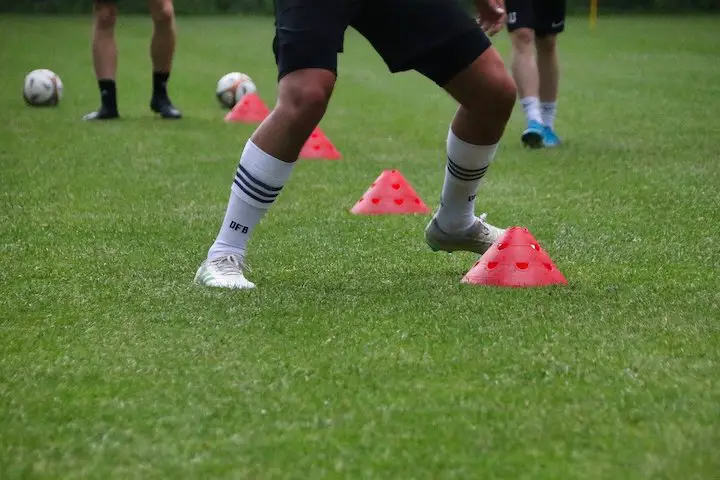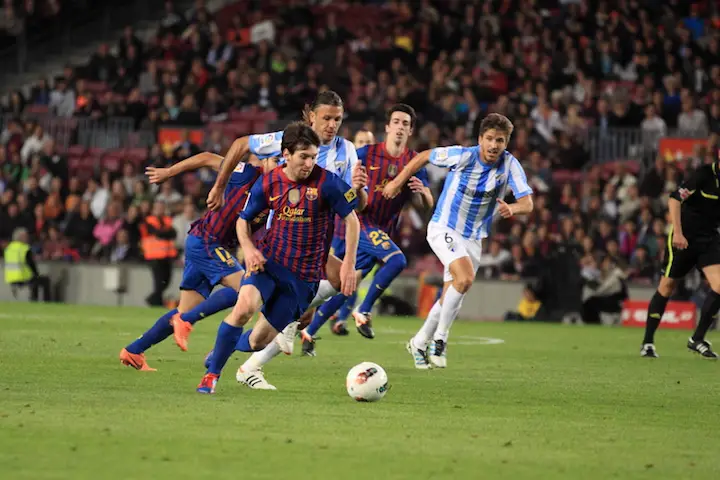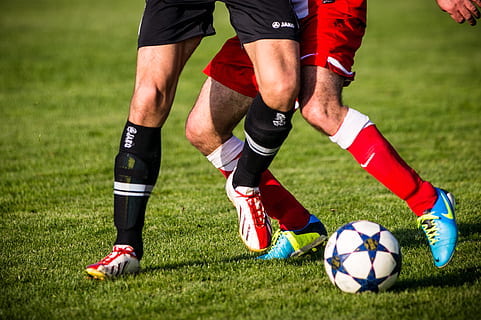Your Guide

Alex Waite
Playing soccer at any level requires different physical skills: Balance, Speed, Strength, Timing and Stamina.
All has its place in the sport, and working on each is key to becoming a better all-around soccer player.

Having the stamina to play competitive soccer is essential.
When I first started playing soccer, I would start the match like a whirlwind, running everywhere, closing players down, tackling, shooting, passing, blocking, trying to DO EVERYTHING.
But, at the same time, in every match, I would feel myself tiring around the 60 to 70-minute mark. My legs felt like lead, I struggled to make easy passes, and I would eventually get subbed off.
Like most soccer players, I had to improve my stamina and learn how to control my energy levels for 90 minutes.
To address this problem, I had to take part in extra training sessions to improve.
But it wasn’t just about more jogging and running; the practices were more detailed and more scientific than just being able to run for 90 minutes.
In this article, we will look at why stamina is central to becoming a good soccer player. We will provide plenty of tips to IMPROVE YOUR STAMINA in soccer.
How to Increase Stamina in Soccer?
Increasing stamina for soccer is best achieved through endurance and HIIT training.
These two training practices are high intensity and recreate lots of the movements used in soccer matches.
HIIT and endurance training exercises also improve cardiovascular circulation.
This is especially important for soccer players as improved circulation sends more oxygen to the muscles for long periods, improving stamina.
Both these exercises are also used by elite and amateur teams in soccer because they use quick burst training of sprinting and covering ground quickly.
There have been several studies showing how HIIT training, in particular, improves stamina in soccer.
A 2011 article from the Journal of Strength and Conditioning Research showed improving oxygen uptake in teenage soccer players following a five-week HIIT programme.
HIIT programmes have become more widely used in the past decade by professional teams worldwide, showing their effectiveness on player performance.
What is HIIT Training?
HIIT training (High-Intensity Training) is a set of exercises that changes between short-burst activities, usually two to three minutes at 90% to 100% performance.
These are broken up with a slower recovery period at reduced performance before repeating the cycle several times. HIIT training in soccer can be done with or without the soccer ball.
In the video below, England and Liverpool midfielder Jordan Henderson goes through a set of HIIT training.
His position in central midfield requiring lots of stamina in soccer due to covering most of the pitch during a match.
What is Endurance Training?
Endurance training is a continuous exercise practised at 60% to 70% performance for a medium period between a few minutes and 30 minutes.
This could be jogging, swimming or cycling.
Endurance training can also increase strength and muscle mass through exercises like sit-ups, press-ups etc.
However, some endurance training routines can be adapted specifically for the changing pace required in soccer.
For example, different length and speed sprinting drills can be used. Exercises, where you change direction quickly, are also effective.
Nike Academy performance director Jon Goodman goes through several endurance exercises players perform when building stamina in pre-season.
He also explains how these practices can be adapted for different level soccer players.
Make Stamina Training Fun
Often, we see elite level athletes in many sports taking their stamina training very seriously, a bit like Rocky training montage, where he runs up hundreds of steps, stone-faced to the Eye of the Tiger.
Of course, for elite level athletes, this physical work is to gain an extra few per cent in their performance.
However, in more semi-professional and amateur levels, stamina training can be More Light-Hearted.
Usually, pre-season is when players step up their stamina and fitness drills to get ready for the new season. For me, this was one of the most enduring, repetitive and BORING PARTS of the season.
However, one of my former coaches made fitness training fun in so many ways by making small tweaks to our sessions.
To make stamina training more enjoyable, try some of the tricks below. They will help with improving stamina in soccer and can be done individually or with teammates.
1) Use a Deck of Cards
Making rules for each card or suit is a great way to ADD SOME FUN to stamina training.
Lower ranked cards could equal the number of reps or sprints, while picture cards could be more or fewer reps.
For example, the two diamonds could be high knees for 30 seconds, or the 10 diamonds could be high knees for three minutes.
The element of chance makes training more exciting, and it’s great for a bit of team bonding early in the season.
2) Use Dice
For this game, you will need two dice.
One can set the number of reps of sets a player does, the second can select a player’s exercise.
For example, a six on dice one could be shuttle sprints, and a four on dice two could equal four sets of shuttle sprints.
Better yet, get teammates to roll for each other to increase team bonding and cohesion.
3) Team Up, Make It a Competition
A bit of friendly competition can improve stamina and morale in soccer.
Competing against a teammate or against yourself to improve times or the number of reps adds the element of fun and determination to improve.
This could get an additional 10% out of players and individuals during stamina practice.
Why is Stamina Important in Soccer?
Stamina is important in soccer because it helps players perform at the top of their game for 90 minutes.
Sometimes, when watching professional soccer, you may see players late in the game start to misplace passes, sprint less or lose half a yard of pace.
This is because they are tired, fatigue has set in, which is affecting their performance.
Stamina in soccer means covering ground quickly (closing down opponents, tracking players back, chasing the ball when attacking).
Players also have to cover long distances by jogging back into position for a goal kick or by shuffling side to side when out of possession.
Different player movements and pace changes throughout a match mean they have to manage energy levels for long periods.
Elite soccer players often run over 10 kilometres per match, with Wolves’ Leander Dendoncker covering a record 13.21 km in one match during the 2019/20 Premier League season.
In Summary
Improving stamina in soccer is just as important as practising technical skills. Managing fitness levels and building stamina can PROVIDE AN EDGE during competitive matches.
HIIT and Endurance training are the best ways to improve stamina in soccer.
These practices can be done either individually or as a team, and they improve cardiovascular circulation, which provides more oxygen to the muscles, keeping them going for long periods.
However, it is important to try and make these training routines fun. Often, the training you do without the ball can be the most boring.
Whether you are training by yourself, with partners, or with teammates, try adding some entertainment to your stamina training.
Who knows, if you are not already you may start to enjoy the sprints and long-running sessions over time!



